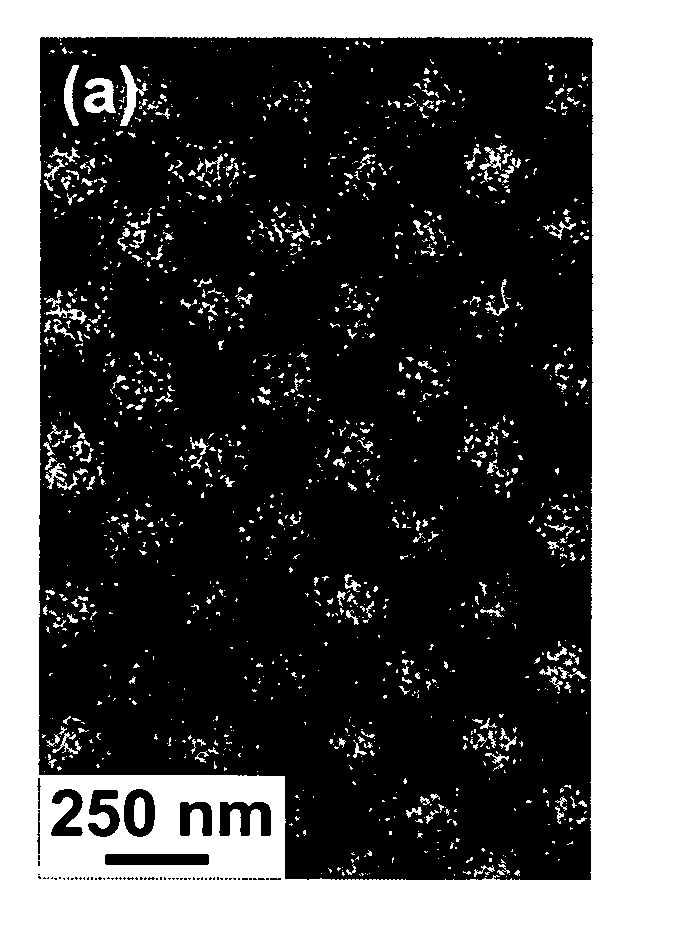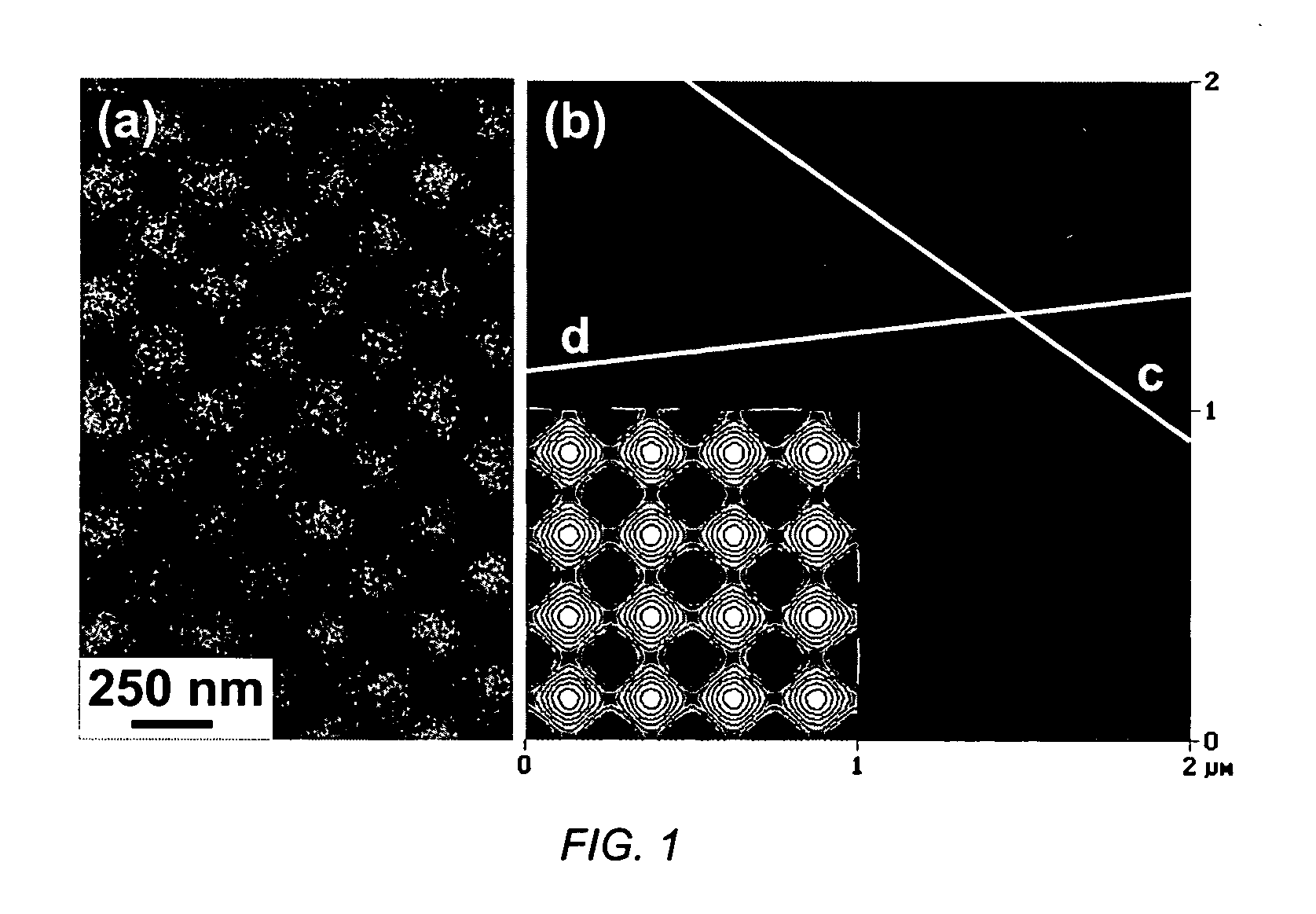Fabrication method for arranging ultra-fine particles
a technology of ultra-fine particles and fabrication methods, which is applied in the field of fabrication methods for arranging ultra-fine particles, can solve the problems of not being able to accommodate nanoparticles with a diameter larger than 10 nm perfectly in cylindrical wells, and not being easy to large-scale fabrication
- Summary
- Abstract
- Description
- Claims
- Application Information
AI Technical Summary
Benefits of technology
Problems solved by technology
Method used
Image
Examples
example 1
[0022] A PS-PVP copolymer with a weight average molecular weight of 65,200 g / mol, a polydispersity of 1.04, and a PVP volume fraction of 0.12 was synthesized by sequential anionic polymerization technique as previously documented. (H. Yokoyama et al. 2000). Co nanoparticles were synthesized in inverse PS-PVP micelles in toluene by partial pyrolysis of dicobalt octacarbonyl, Co2(CO)8, at 115° C. as reported elsewhere. (F. S. Diana et al.). The synthetic scheme is a variation of the method described by Puntes et al. (2001). Monodisperse amorphous Co nanoparticles with an average diameter of 20±2 nm were obtained after a reaction time of 2 min. The structure of micellar nanoparticles obtained is similar to that of the PS-PVP micelles loaded with tetrachloroauric acid reported by Spatz et al. (2000).
[0023] Two-dimensional periodic nanopatterns were fabricated by means of holographic lithography. The beam from a He—Cd laser operating at wavelength of 325.0 nm was expanded and spatially ...
example 2
[0029] The spin-coating method was also used to make the self-assembled nanoparticle arrays on the photoresist patterns, and the self-assemblies obtained at 2,000 rpm are shown in the SFM height images of FIG. 3(a)-(c). When a dilute solution (c=0.125 mg / ml) was used, arrays with a sparse population of nanoparticles (2±2 particles per well) were obtained without any particles positioned on top of photoresist mesa regions, as shown in FIG. 3(a). In FIG. 3(a), some wells are shown containing only a single nanoparticle. A more concentrated solution (c=0.50 mg / ml) results in arrays with a dense population of nanoparticles (9±2 particles per well), as shown in FIG. 3(b). The nanoparticle number per well is linearly proportional to the solution concentration at low concentrations as shown in FIG. 4. This implies that the nanoparticle density in the wells can be controlled by simply changing the nanoparticle concentration in the solutions used. If the concentration is further increased to ...
PUM
| Property | Measurement | Unit |
|---|---|---|
| aspect ratio | aaaaa | aaaaa |
| aspect ratio | aaaaa | aaaaa |
| diameter | aaaaa | aaaaa |
Abstract
Description
Claims
Application Information
 Login to View More
Login to View More - R&D
- Intellectual Property
- Life Sciences
- Materials
- Tech Scout
- Unparalleled Data Quality
- Higher Quality Content
- 60% Fewer Hallucinations
Browse by: Latest US Patents, China's latest patents, Technical Efficacy Thesaurus, Application Domain, Technology Topic, Popular Technical Reports.
© 2025 PatSnap. All rights reserved.Legal|Privacy policy|Modern Slavery Act Transparency Statement|Sitemap|About US| Contact US: help@patsnap.com



